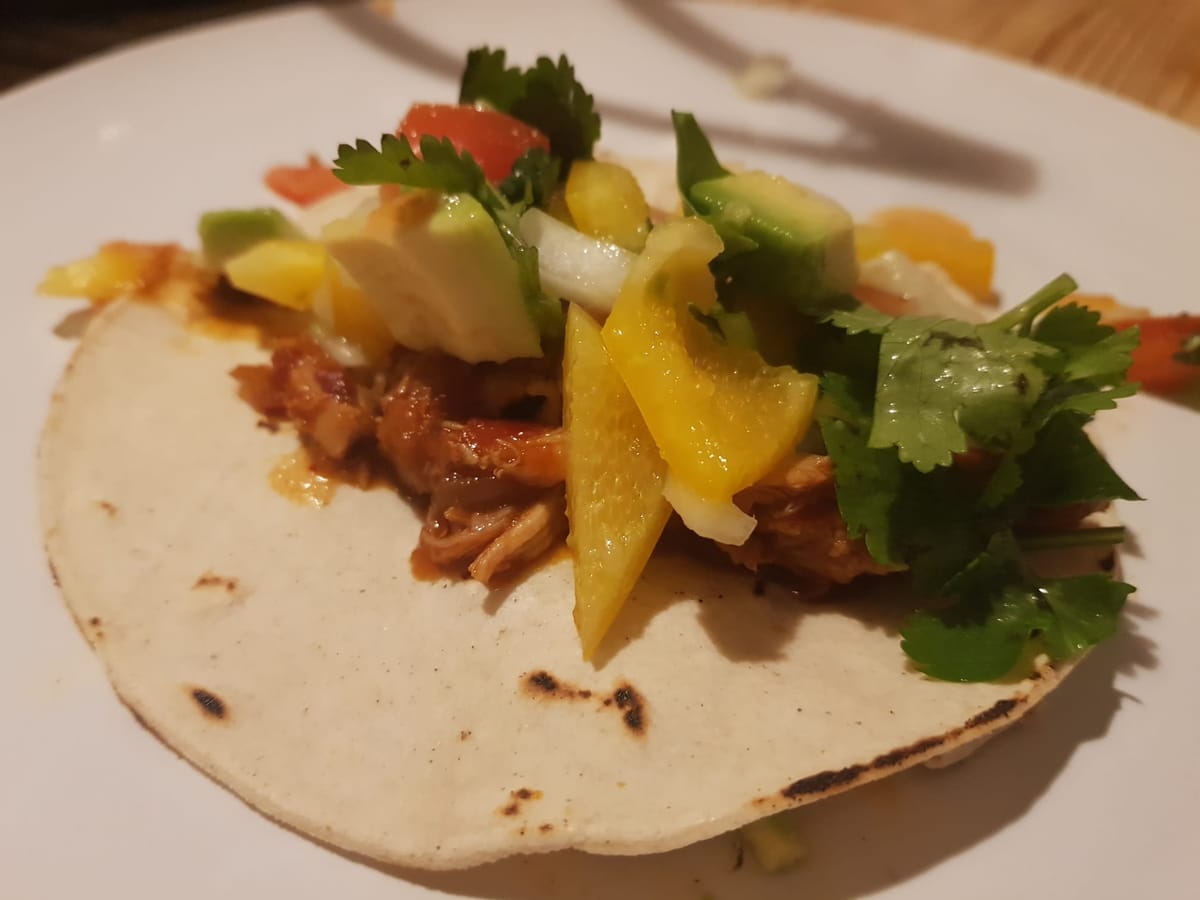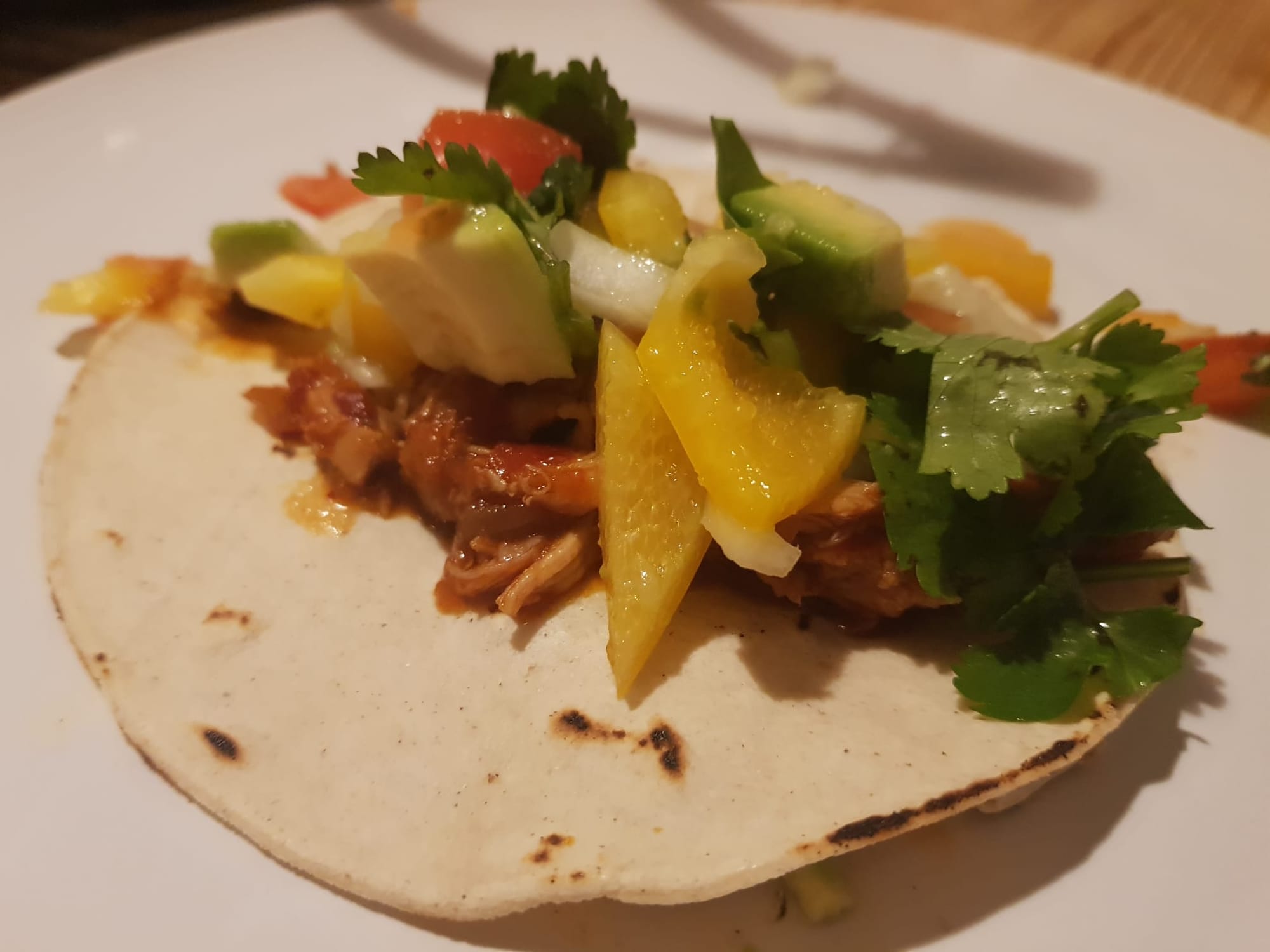To Stick or Non to Stick

Last night I was standing over my stove, yet again, scalding oil into patina on my flat bottom wok. It was just before bedtime pottering about in the kitchen and I’d realized that after washing the wok, I’d left it drying upright, so the moisture had accumulated in the flats like dew, and the few exposed patches of carbon steel that I’d scraped with my big wok stirrer while stir frying had of course immediately turned rust-red. I sighed and scrubbed it out with the abrasive metal scraper I have for just this purpose, heated the pan dry, reapplied a thin layer of oil with a paper towel, and then blasted it until the hydrocarbons had fumed and polymerized into a tar-black nonstick coating. Safe from rust again.
Over the past few years I’ve developed a bit of a fixation on cookware. This was almost certainly brought on by the triple whammy of Covid isolation, a steady income (RIP), and entering my mid-thirties. That first whiff of one’s own mortality for whatever reason makes people want to acquire fine obects, like ceramics, or maybe a fancy lamp. Nice cookware can be acquired secondhand, or as factory seconds at places like TJ Maxx; i.e., cheaply.
Why are good pans worth getting? Because they make food taste better. This is kind of a stupid answer, I know. But if you’ve ever cooked for example a chicken thigh in a nonstick pan, it only barely gets a sepia sheen. The browning is where all the flavor is. (The browning is also what makes food look a lot more appealing — it speaks to the Neanderthal brain that fears and reveres the power of fire.) Whereas on a big dense slab of hot iron or steel, you get a beautiful sear or blackened crust. Iron and iron-alloy pans distribute heat better, retain heat longer, and also simply get hotter. Nonstick simply can’t get all that hot.
I’ve been known to occasionally proselytize to those who are unfortunate enough to share space with me while cooking that instead of using a nonstick pan, they should reach for the stainless steel or the big cast iron skillet. Yes, it’s true: I told people that they were doing it wrong. People (unfortunate flatmates, mostly) have been known to wait until I leave the kitchen to commence their own cooking.
Many are averse to cooking with non-nonstick cookware because, well, stuff sticks. Nonstick is cooking on easy mode. Sure, if you have a well-seasoned cast iron pan, or if you make sure your stainless steel pan is hot enough, stuff (often) won’t stick either — but that’s a lot of maintenance and increased attention while cooking. And it’s way harder to cleanup if there’s a bunch of charred gunk in there. And there’s always the threat of corrosion and rust. Nonstick pans are made out of aluminum, which doesn’t rust (???? As far as I know???) and have that magic plasticky coating that keeps them nice and safe.
So: Which is better? Is nonstick just a big scam, or are iron and steel a big waste of time?
I spoke to Bryn Jackson at Cult Flav, which is a sort of an independent Consumer Reports (or Which? for my UK readers) but only for cooking stuff and also run entirely by Bryn and his wife Sarah out of their apartment in LA. They buy, oh, a thousand bucks worth of fancy nonstick pans, test them all, post the results on their TikTok channel and website, and then try to make the money back through affiliate marketing or merchandise. (It mostly works! He showed me a giant pile of 60 silicon spatulas that he planned to test in the next day or so, and make a bunch of videos with. Endless spatula videos, plus Amazon links to buy the best.)
Beyond his restaurant experience, Bryn has a background in tech and approaches cooking from a very sciencey perspective, so I thought he might be a good guy to ask. He cites Alton Brown as a big inspiration.
“Nonstick cookware can’t react with water at low temperatures,” he said. “Stainless steel will do that. Protein is water soluble, and protein and iron like to bond. So if there’s water in between the protein and the surface, it will stick,” says Bryn.
“Bond”, at the chemical level, means swapping electrons. Most nonstick pans have a coating of PTFE (poly-tetra-fluoro-ethylyne), what we know as Teflon. It's a highly electronegative polar molecule, so it repels water for the same reasons oil does — like charge repels like, so things don’t bond. (Ceramic nonstick coatings, on the other hand, do bond to your food — but that bonded layer also comes straight off the pan itself. It’s entirely nonreactive and nontoxic because it’s just fancy dirt, but that’s also why ceramic pans wear out in a year or so. They're made to die. ☹️)
And, according to some new research (as in, last February new) PTFE also leaves a nanoscopic amount behind on the object sliding around on it. It’s sliding on itself. I’m sure you’re all thrilled to know that you’re eating trace trace trace amounts of PTFE every time you use one of these pans, but also, news broke this week that bottled water contains 100 times the amount of microplastics previously believed. So oops!
How they got PTFE to stick to the aluminum is another completely different and mostly boring story, but the guy who did it founded the Tefal company, which, as you’re probably aware, still makes cookware. The other guy who figured it out, Stanley Cheng, is also still making cookware as CEO at Meyer under the brands Circulon and Analon. (Cheng, the son of Taiwanese immigrants to the US, also came up with the flat bottom wok I was cleaning at the start of this ramble.)
The drawback: as I said, you can’t get nonstick pans all that hot. It just doesn’t produce a nice sear on vegetables or meats or anything else. You also can’t get PTFE all that hot because it starts breaking apart and releasing some less-than-pleasant gasses into the air. “It has a bad habit of killing birds in the same room,” Bryn said. The markedly more toxic PFOA has been removed from cookware entirely, and PTFE is "generally recognized as safe" according to the FDA, but still.
That sounds like a “don’t use nonstick ever” but they do have some advantages over other cookware, besides ease of cleaning. “It’s really good if you want to cook fish at low temperature,” Bryn said. “Or crispy tofu. You just can’t cook tofu in a stainless steel pan without destroying it.”
Bryn also told me about a brand-new nonstick coating, which he calls the best they've ever tested – the Nanobond, a titanium alloy that's not quite as nonstick as other nonsticks, but it's harder than steel and lasts much longer. "It’s the same coating you see on masonry drill bits," Bryn said. Hestan currently has the patent (owned by Meyer) but it's expiring soon, and it'll be everywhere in a few years.
In general, if you want to cook things with more ease and less mess in a stainless steel pan, you want to get the pan hot enough that moisture evaporates as it comes out of your food. You can test this if you throw in a drop of water into your pan — if it sits there and bubbles, it’s not hot enough yet. If it skitters around in the pan, then the water droplet is happily levitating on a cushion of steam, and you’re ready to fry. This is called the Leidenfrost effect, and Bryn mentioned that for some reason, this stuff is all over TikTok — “Everyone seems to know what the Leidenfrost effect is??” – and I suspect because it's both got a snappy name and it's highly visually fun, making it great for video content.)
When the water skitters is when you want to add your oil. When you put a nice cut of meat down, for instance, INITIALLY it will stick, but that’s ok! As it sears and a crust forms, it will release from the pan and unstick. Persist. (And, if you do get stuck bits to the pan, you can always deglaze it with some wine and make a pan sauce, which both cleans your pan and gets you a tasty sauce.)
I am obsessive and will likely continue to use my metal monstrosities, and will likely stay dissatisfied with my own ability to do the upkeep. I came away from this interview with basically the reverse of what I expected: I now have a higher respect for nonstick pans and for the people who use them. I refuse to write about how to properly maintain a cast iron pan. Please never ask me this.
I asked Bryn what he’s been cooking lately, and he said that it’s all about Khao Soi. He and Sarah are perfecting a recipe, and he said he’s had Khao Soi five or six times this week. It’s a yellow curried noodle soup with pickled mustard greens and fried egg noodles on top — a dish borne out of a meeting between northern Thai and southern Chinese cuisine.
I wanted to make that this week but instead a box of christmas chilis arrived from dad and kel, and I made chicken chipotle tacos with an avocado salad.

Short recipe:
- poach chicken thighs in simmering water. I added bay leaf, clove, allspice berries, half an onion, and a whole garlic clove to the water to make it fun and herbaceous. This took about 20 minutes. The water looked like it was having a lot of fun. Then I plunged the thighs into an icy bowl of water to stop them cooking, drained everything, and shredded the meat. (and removed the yuck bits.)
- make a chipotle sauce. soaked chili pods (3? 4?) in boiled water. sauteed onion and garlic in olive oil, then added chili pods to oil and simmered a bit with some of the chicken poaching liquid. Then took an immersion blender to it all and made it S M O O T H.
- put chicken in sauase
- Avocado salad/pico de gallo/whatever: chopped up avocado, bell pepper, onion, cilantro, chili, tomato, and a bunch of lime. mix in bowl.
- hot tortilla
Please forgive the long hiatus; there were many holiday festivities, many enjoyable times with family, and then, a long and extended stomach bug. Semi-regular posting will hopefully continue throughout 2024 until I eat too much and have to take a nap on the couch.
correction on 13/1 - I previously wrote that PFAS aren't used anymore, but that's wrong. PFAS (Per- and Polyfluorinated Substances) are still used. It's an umbrella term, and both PTFE and PFOA fall under that umbrella. PFOA (Perfluorooctanoic acid) is the super toxic and now unused compound. (h/t Bryn) Also fixed typos.
